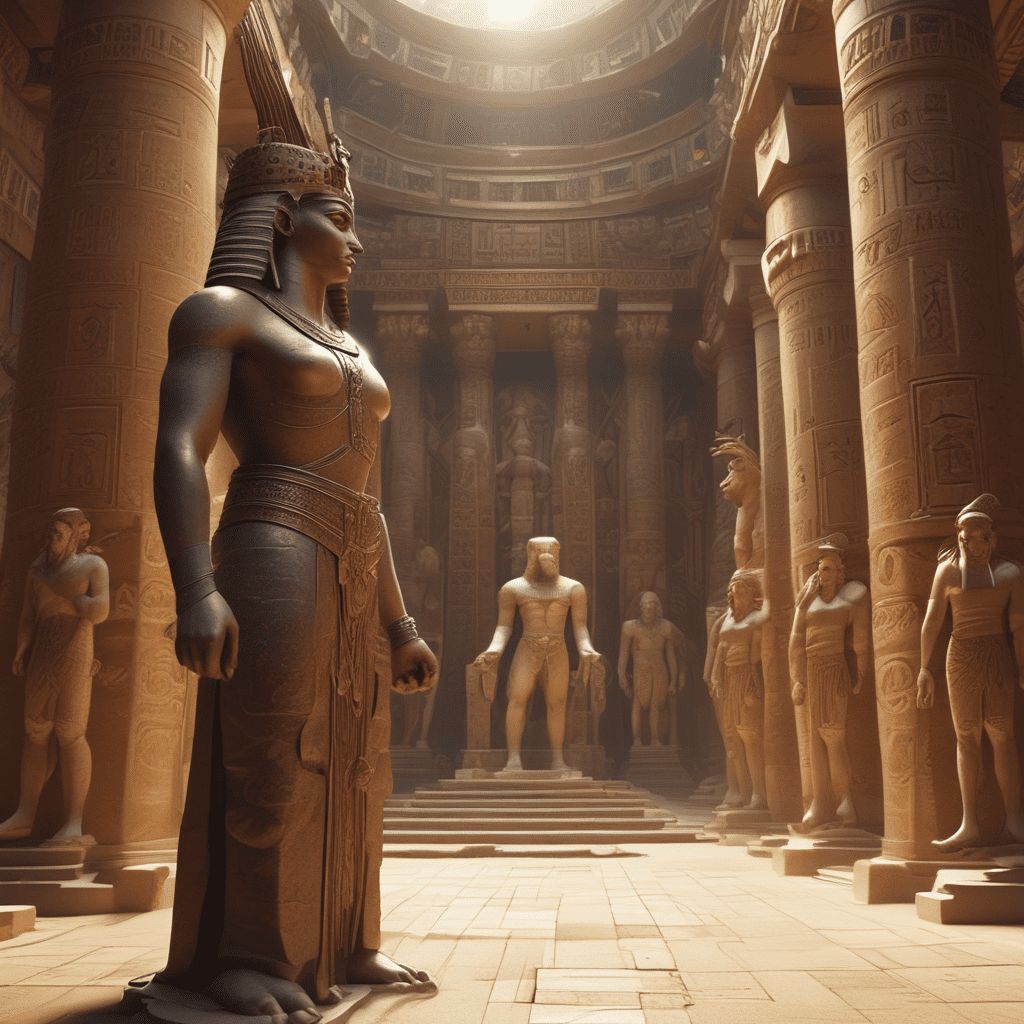The Great Flood: Myths That Challenge Our Understanding of History
I. Introduction
The Great Flood is a powerful narrative that recurs throughout human history, resonating across different cultures and civilizations. This story often embodies themes of destruction, renewal, and divine intervention, making it a significant element of human mythology. Its implications stretch beyond mere storytelling, as they provide insight into the collective consciousness of societies and their understanding of nature.
This article aims to explore the various flood myths from around the world, examining their historical context, archaeological evidence, and the psychological and cultural significance they hold. By investigating these narratives, we can better understand how they shape our perception of history and humanity’s relationship with the environment.
II. Historical Context of Flood Myths
A. The role of natural disasters in early civilizations
Natural disasters, such as floods, have played a crucial role in shaping the development of early civilizations. They often served as catalysts for change, prompting migrations, the establishment of new cultures, and the evolution of agricultural practices. The memory of catastrophic events tends to be preserved in the form of myths and stories, which help societies process and understand these occurrences.
B. Overview of major flood myths from various cultures
- Mesopotamian (Epic of Gilgamesh): This ancient story recounts a great flood sent by the gods to wipe out humanity, with Utnapishtim being the sole survivor, akin to Noah.
- Biblical (Noah’s Ark): The well-known tale of Noah describes how God flooded the earth to cleanse it of wickedness, saving Noah, his family, and pairs of animals in an ark.
- Hindu (Manu and the Fish): In this myth, Manu is warned by a fish about an impending flood, leading him to build a boat and save various species.
- Native American myths: Many Indigenous tribes have their own flood stories, often depicting a great deluge that reshapes the world and serves as a lesson or warning.
III. Archaeological Evidence of Ancient Floods
A. Discoveries that support flood narratives
Archaeological findings, such as sediment layers and ancient flood deposits, provide evidence that corroborates many flood myths. For instance, the discovery of flood layers in the Mesopotamian region suggests significant flooding events occurred around the time when these myths were recorded.
B. Case studies of ancient civilizations affected by flooding
Case studies from civilizations such as the Sumerians, Egyptians, and Indus Valley inhabitants illustrate how floods influenced their development. For example:
- The Sumerians experienced catastrophic floods that shaped their agricultural practices.
- The Nile River’s annual flooding was crucial for Egyptian agriculture, yet it also posed risks of overflow.
- Indus Valley cities showed signs of urban planning adapted to manage seasonal flooding.
C. The impact of geography and climate on flood myths
Geographical features and climatic conditions significantly influence the formation of flood myths. Regions prone to flooding are more likely to develop narratives that reflect the local environment, showcasing humanity’s struggle against nature’s power.
IV. The Role of Oral Tradition in Shaping Flood Narratives
A. How oral storytelling preserves historical events
Oral traditions serve as vital repositories of collective memory, preserving historical events through storytelling. Flood myths, often passed down through generations, reflect the lived experiences of communities facing such disasters.
B. The evolution of flood myths over generations
As societies evolve, so do their narratives. Flood myths may adapt to reflect contemporary values, fears, and environmental changes, illustrating the dynamic nature of cultural storytelling.
C. Analysis of common themes and motifs in oral traditions
Common themes in flood myths include:
- Divine retribution or cleansing
- Survival and resilience
- The importance of nature and balance
- Community and cooperation in the face of disaster
V. The Psychological and Cultural Significance of Flood Myths
A. Floods as metaphors for rebirth and renewal
Floods often symbolize a form of catharsis, representing both destruction and the potential for new beginnings. They are seen as a necessary force that clears away the old to make way for the new, echoing the cyclical nature of life.
B. The moral and ethical lessons derived from flood stories
Many flood myths impart moral lessons, warning against hubris, greed, or moral decay. These narratives serve to reinforce societal values and encourage ethical behavior among community members.
C. The influence of flood myths on cultural identity and values
Flood narratives contribute significantly to cultural identity, often becoming integral to a community’s understanding of its place in the world. They embody shared experiences and collective memory that bind people together.
VI. The Scientific Perspective on Flood Events
A. Geological evidence of ancient megafloods
Geological studies reveal evidence of ancient megafloods that align with many flood myths, suggesting that these narratives may be rooted in real events. For example, the Missoula Floods in North America provide a scientific basis for understanding large-scale flooding.
B. The role of climate change in historical flooding patterns
Climate change has historically influenced flooding patterns, with rising sea levels and extreme weather events contributing to catastrophic floods. Understanding these patterns helps contextualize flood myths within a broader environmental framework.
C. Debunking or supporting the literal interpretations of flood myths
While some scientists work to debunk literal interpretations of flood myths, others find that these stories can reflect historical truths, albeit often embellished. The challenge lies in distinguishing between metaphorical and historical truths in these narratives.
VII. Comparative Analysis of Global Flood Myths
A. Similarities and differences in flood narratives across cultures
Many cultures share similar elements in their flood myths, such as the concept of a chosen survivor, divine punishment, and the rebirth of the world. However, the specific details and moral lessons can vary significantly.
B. The concept of a universal flood myth
The idea of a universal flood myth suggests that these stories may arise independently in various cultures as responses to shared human experiences with disasters. This concept raises intriguing questions about the nature of storytelling and shared human history.
C. The implications of these comparisons for our understanding of human history
By comparing flood myths globally, we can uncover insights into how different cultures have grappled with the same existential questions, revealing common threads in human experience that transcend time and geography.
VIII. The Impact of Modern Interpretations of Flood Myths
A. How contemporary media portrays the Great Flood
Modern media, including films, literature, and art, often reinterpret flood myths, showcasing their enduring power. These portrayals can influence public perception and understanding of these ancient narratives.
B. The resurgence of interest in flood myths in popular culture
In recent years, there has been a renewed interest in flood myths, with popular culture exploring themes of environmentalism, survival, and moral dilemmas. This resurgence reflects contemporary concerns about climate change and ecological disaster.
C. The role of education in understanding historical contexts
Educational programs that include the study of flood myths can enhance our understanding of history and culture. By examining these narratives, students can appreciate the interconnectedness of human experiences and the lessons they impart.
IX. Debates and Controversies Surrounding the Great Flood
A. Theological vs. scientific interpretations of flood events
The debate between theological and scientific interpretations of flood events continues to be a contentious issue. While some argue for a literal interpretation based on religious texts, others advocate for a scientific understanding based on geological evidence.
B. The implications of differing views on history and mythology
These differing views can have profound implications for how we understand history and mythology. They shape educational curricula, inform public policy, and influence cultural narratives.
C. Case studies of prominent debates in academia and public discourse
Prominent debates include discussions around the historical accuracy of biblical accounts versus archaeological findings, with scholars from various fields contributing to the discourse. These debates highlight the complexity of interpreting ancient narratives and the need



